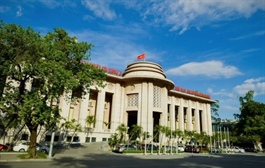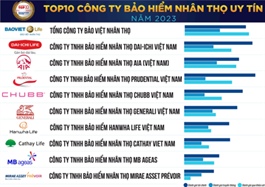Standard Chartered forecasts interest rates to return to pandemic levels
Standard Chartered forecasts interest rates to return to pandemic levels
Standard Chartered Bank forecasts Viet Nam’s second quarter GDP growth to have slowed to 1.5 per cent year-on-year (from 3.3 per cent in the first quarter), posing downside risks to its 6.5 per cent growth forecast for 2023. However, a rebound is expected in the second half of the year.

Standard Chartered forecasts the State Bank of Viet Nam (SBV) will cut the benchmark refinancing rate by another 50bps to 4 per cent in the third quarter. — Photo vietnamplus.vn |
This information was released in the bank’s recent global research report titled “Viet Nam Macro: Slower second quarter GDP to justify more rate cuts”.
According to the international bank, June macro data will likely continue to improve slightly from May but remain relatively weak as a still-deep contraction in trade leads to slower manufacturing and economic activity.
Recent nationwide blackouts are likely to have weighed on economic activity. Exports are predicted to fall 5.2 per cent year-on-year in June, imports to fall 17 per cent, and industrial production growth to edge up to 1.2 per cent.
The trade surplus is likely to rise to US$4.1 billion from $2.2 billion in May. Inflation may ease further to 2.2 per cent year-on-year (from 2.4 per cent); the bank sees still-robust retail sales growth of 12.2 per cent year-on-year. Disbursed FDI declined 0.8 per cent year-on-year to $7.6 billion; pledged FDI fell 7.3 per cent to $10.9 billion.
Standard Chartered forecasts the State Bank of Viet Nam (SBV) will cut the benchmark refinancing rate by another 50 basis points (bps) to 4 per cent in the third quarter (the same level as during the pandemic years) and stay on hold until end-2025. The SBV cut the rate to 4.5 per cent from 5 per cent on June 16; that followed two earlier 50bps cuts, in March and May.
Tim Leelahaphan, economist for Thailand and Viet Nam, Standard Chartered Bank, said: “We think the SBV is currently focused more on growth amid easing price pressure. While it is reversing the monetary tightening implemented last year, lingering concerns about inflation and financial instability should prevent additional rate cuts beyond the 50bps we currently expect.”























